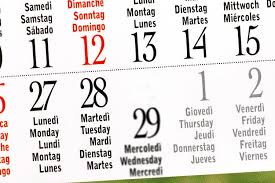Leap into 2016

January 5, 2016
A leap year is a year that contains one additional day, making the year 366 days long. A leap year occurs every four years and the extra day is added on February 29. The last leap year was in 2012 and 2016 is one. But why do we have leap years? Well, leap years are needed to keep our modern day or Gregorian calendar in alignment with the Earth’s revolutions around the sun. A Gregorian calendar is a solar calendar based on a 365 day year divided into 12 irregular months. This calendar is named after Pope Gregory XIII who first introduced it in February 1582. The Gregorian calendar is an internationally accepted civil calendar also known as the “Western” or “Christian” calendar.
The Earth takes approximately 365 days, five hours, 48 minutes, and 46 seconds to circle once around the sun. Because the Gregorian calendar has only 365 days we would lose almost six hours off of our calendar every year if we did not add a day every four years. A year is a leap year if:
- it is divisible by four
- If the year is divisible by 100, it is not a leap year, unless…
- the year is also evenly divisible by 400
The leap year was first introduced over 2000 years ago in the Roman Empire by Julius Caesar. However the Julian calendar had only one rule of being leap year that was that the year only had to be divisible by four. This caused a problem because there were too many leap years. The Julian calendar got corrected about 1500 years later by Pope Gregory.





